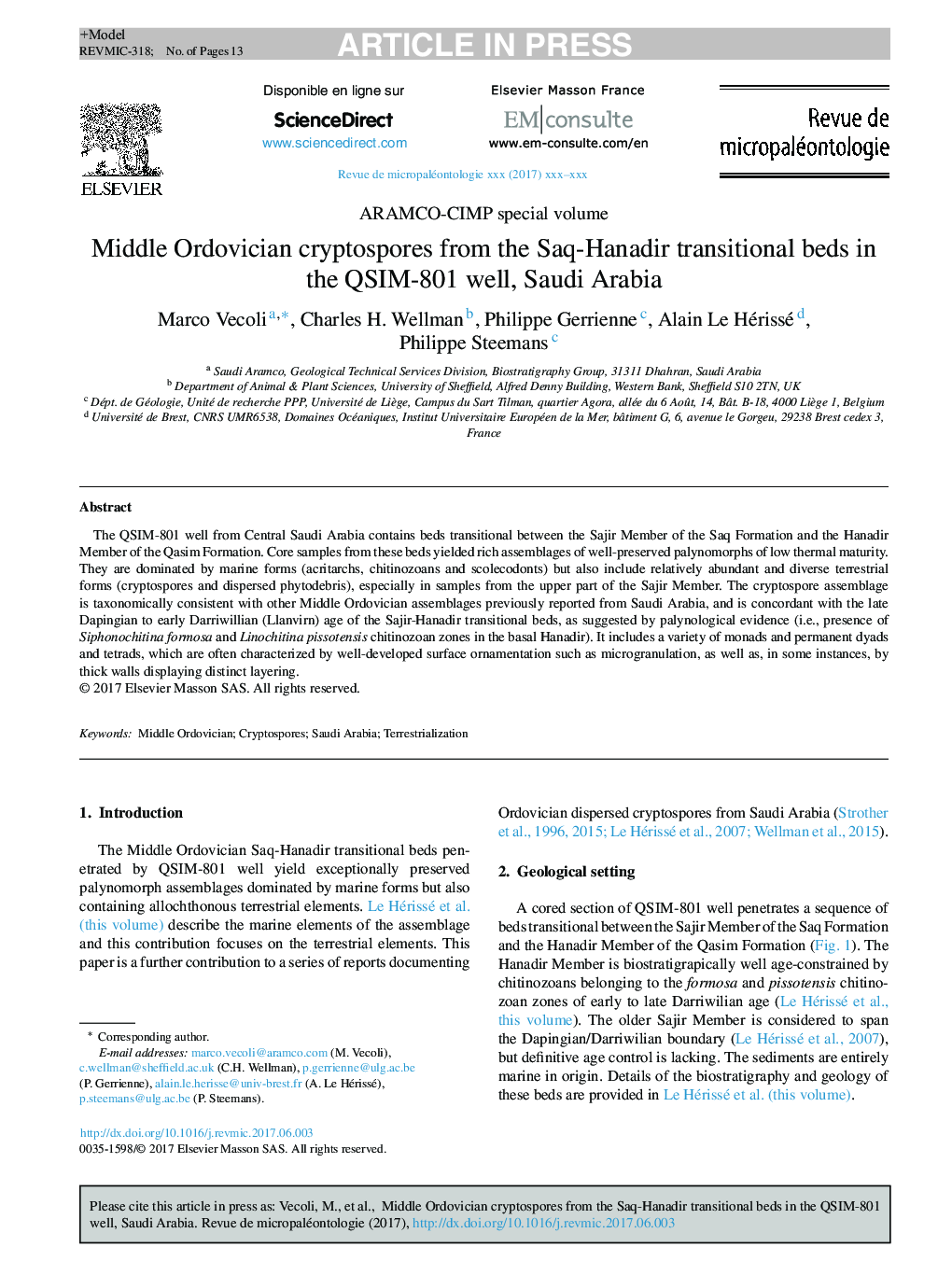| Article ID | Journal | Published Year | Pages | File Type |
|---|---|---|---|---|
| 5788435 | Revue de Micropaléontologie | 2017 | 13 Pages |
Abstract
The QSIM-801 well from Central Saudi Arabia contains beds transitional between the Sajir Member of the Saq Formation and the Hanadir Member of the Qasim Formation. Core samples from these beds yielded rich assemblages of well-preserved palynomorphs of low thermal maturity. They are dominated by marine forms (acritarchs, chitinozoans and scolecodonts) but also include relatively abundant and diverse terrestrial forms (cryptospores and dispersed phytodebris), especially in samples from the upper part of the Sajir Member. The cryptospore assemblage is taxonomically consistent with other Middle Ordovician assemblages previously reported from Saudi Arabia, and is concordant with the late Dapingian to early Darriwillian (Llanvirn) age of the Sajir-Hanadir transitional beds, as suggested by palynological evidence (i.e., presence of Siphonochitina formosa and Linochitina pissotensis chitinozoan zones in the basal Hanadir). It includes a variety of monads and permanent dyads and tetrads, which are often characterized by well-developed surface ornamentation such as microgranulation, as well as, in some instances, by thick walls displaying distinct layering.
Related Topics
Physical Sciences and Engineering
Earth and Planetary Sciences
Palaeontology
Authors
Marco Vecoli, Charles H. Wellman, Philippe Gerrienne, Alain Le Hérissé, Philippe Steemans,
